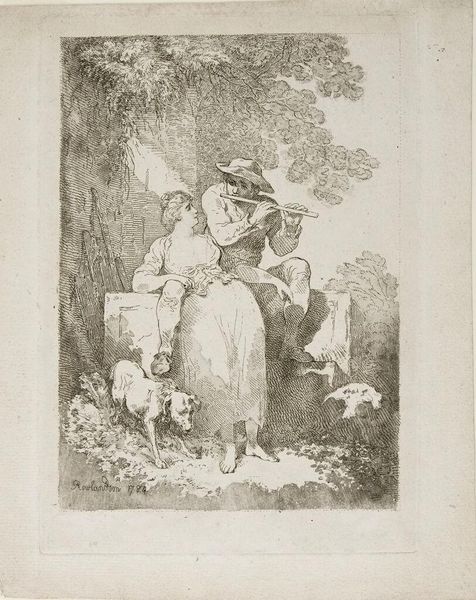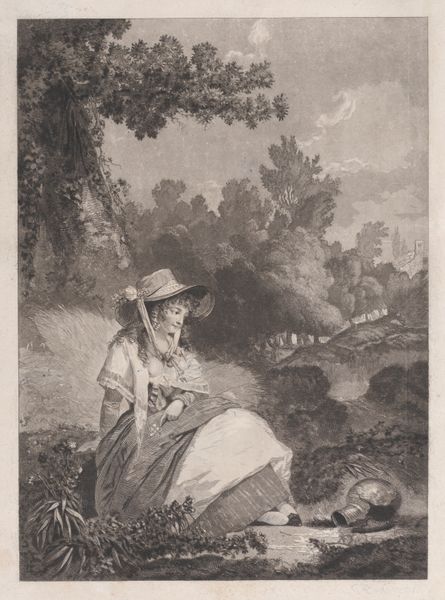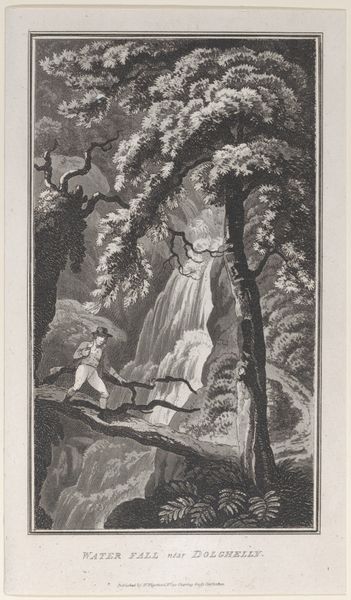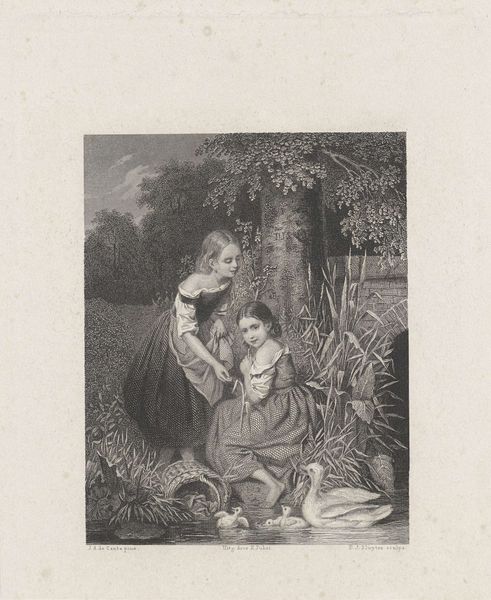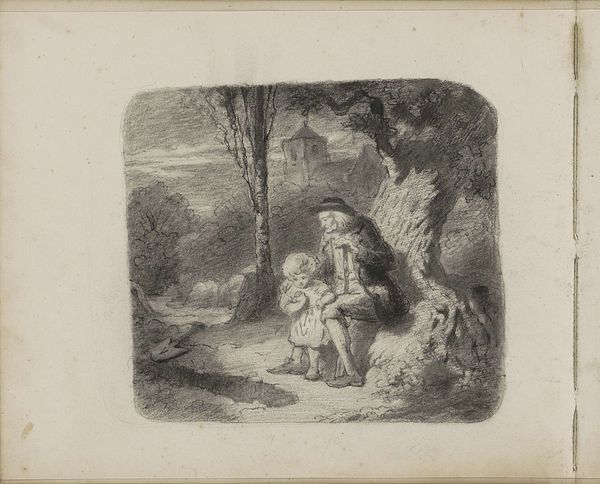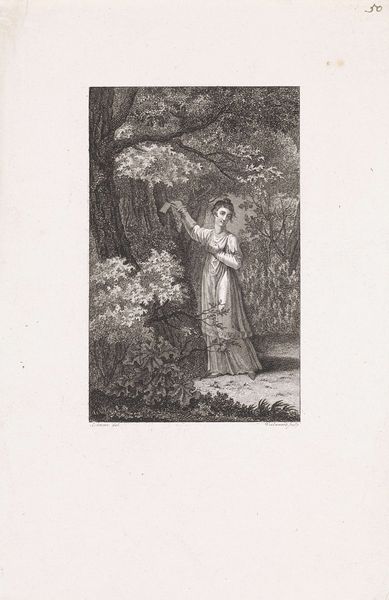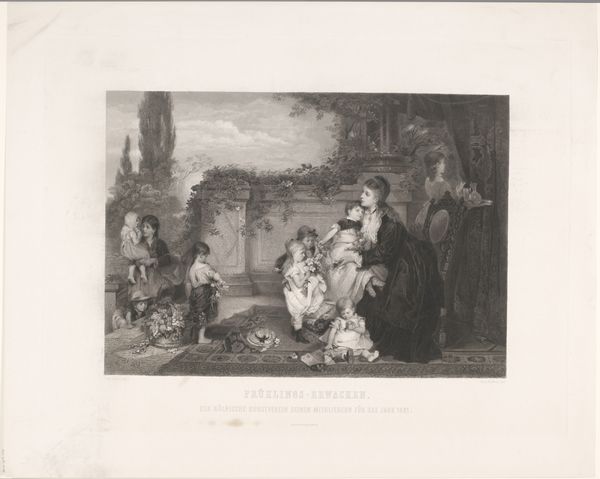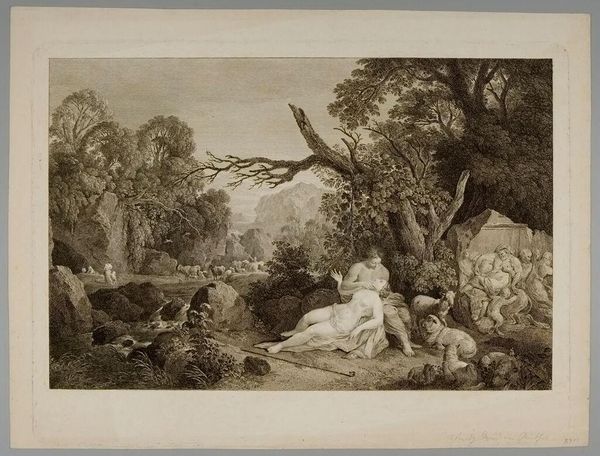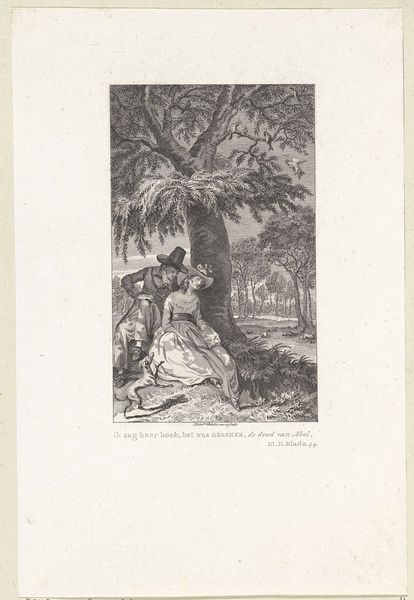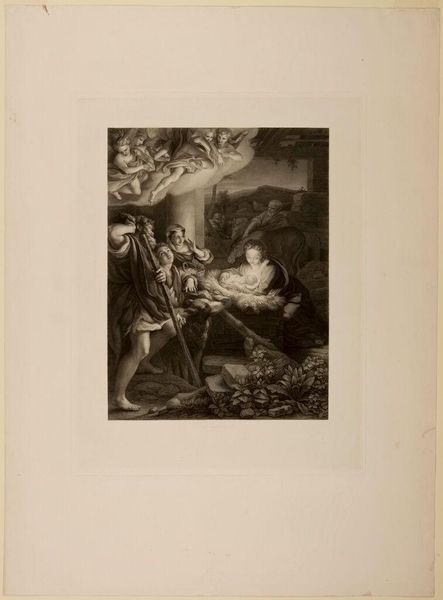
Fortune and Misfortune, or The Broken Pitcher 1787
0:00
0:00
Copyright: Public Domain
Editor: This is Louis Philibert Debucourt's etching and drawing, "Fortune and Misfortune, or The Broken Pitcher," created in 1787. I’m struck by the slightly theatrical, almost stage-like quality of the scene. It’s as though the artist is presenting us with a morality play in print form. What can you tell me about this work? Curator: It is indeed theatrical. Debucourt, working at the cusp of Neoclassicism and Romanticism, captures a potent symbol: the broken pitcher. It’s not just about clumsiness; the pitcher signifies lost innocence, broken vows, or fleeting happiness. Observe how the woman leans against the fountain, an element promising eternal youth and love. Yet, her gaze is distant, thoughtful, and slightly melancholy. The cracked vessel contrasts that promise. What memories do you think that triggers in viewers familiar with the cultural significance of the fountain? Editor: I hadn’t considered the fountain itself as symbolic. The ruined pitcher obviously implies loss, and now I see that contrasted with the promise of everlasting love. Curator: Precisely! Consider the dog looking up at the woman—a symbol of fidelity. Its presence emphasizes the contrast of what is reliable, sincere emotion and how it can be complicated with, perhaps, social pressures or changing desires. Think of the era's emphasis on decorum and virtue versus the emerging romantic notions of individual feelings. Which seems stronger in this tableau, and what effect is created for the contemporary viewer of this image? Editor: That’s fascinating. I see the conflicting messages now, the push and pull between virtue and desire embodied in these symbols, promising ever-lasting love whilst also suggesting a relationship that may not last, even breaking right before your eyes. Curator: Debucourt leaves us contemplating this tension, a potent reflection of a society undergoing rapid change. Editor: This piece has given me a richer insight into the way an artist uses symbolism. It encourages a viewer to think more deeply about that moment in history and its complex emotional terrain.
Comments
No comments
Be the first to comment and join the conversation on the ultimate creative platform.
